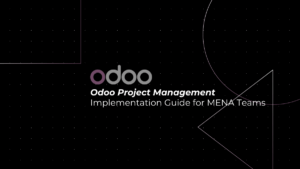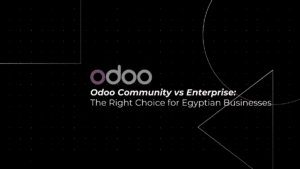
IT alignment is the process of integrating IT into a company’s overall HR management strategy.
This goes beyond simply providing computers for HR professionals to use for work; IT can play a role in automating and streamlining many HR processes. This can increase efficiency and help businesses save time and money.
For example, IT can be used to develop and maintain an employee database.
This database can contain information on employees’ skills, qualifications, and experience. This information can then be used to make better decisions about staffing and training.
Additionally, IT can be used to create and manage employee records. These records can include things like performance reviews, absences, and salary history. Having all of this information readily available can help HR professionals make more informed decisions about their workforce.
Ultimately, incorporating IT alignment into HR processes can help businesses run more smoothly and efficiently. By automating and streamlining HR tasks, businesses can free up time and resources that can be better spent elsewhere. Additionally, having access to accurate and up-to-date employee data can help businesses make better decisions about their workforce.
Table of Contents
ToggleThe Role of IT Alignment in HR
How does IT alignment integrate into a business’s entire HR management strategy, beyond just providing computers for HR professionals to use for work? We’ve outlined a few use scenarios to demonstrate how incorporating IT alignment into HR processes can increase efficiency.
Hiring the Right Talent
Corporate job opportunities draw an average of 250 applicants, per a Glassdoor survey.
While sourcing experts put in a lot of effort to give each candidate a fair evaluation, it may be challenging, especially when you’re a one-person team.
software for hiring, please. These tools sort resumes identifying applicants who most closely meet the requirements for the position. If you’ve ever reviewed resumes as a “gatekeeper,” you are aware of how crucial this duty is. Hours could be wasted simply trying to weed out candidates who are manifestly incompetent or who are sending the same generic résumé to every job posting they come across.
Finding candidates for upcoming positions or ones that haven’t yet been listed is another task that artificial intelligence (AI) and machine learning (ML) tools help with. They keep the resumes of previous applicants on file and can provide recommendations for whom to get in touch with when the time comes.
Onboarding and Offboarding
A new employee certainly doesn’t want to hear any of the following after a difficult hiring process that included interviews, presentations, and technical challenges:
1- “Your email is not yet configured.”
2- “Your monitor hasn’t been ordered by us.”
3- “IT needs to set up the VPN, so we’re not sure if you can work remotely.”
What causes this to happen? Because the new hire’s tech requirements are essentially being communicated by the HR department, the new employee’s management, and IT. There will inevitably be some miscommunication with all the back and forth. It is crucial for HR and IT to work together during the onboarding process.
The majority of HR departments make every effort to make an employee’s first day as smooth as possible.
However, there are so many things that need to be done before or in the first few hours after their birth that it’s possible to forget anything crucial. When this procedure is automated, HR only needs to let IT know the team, role, and date of a new recruit. The IT team may then make sure the employee gets the necessary hardware, software, and system access from day one in order for them to succeed. Furthermore, by standardizing hardware, expenses can be predicted and peer tech envy can be reduced.
- Information Management
The management of all the paperwork pertaining to benefits, payroll, and evaluations is one of the least attractive aspects of HR. Many operations and HR professionals still have to filter through a rising quantity of digital data dispersed across various cloud and on-premise locations, despite the fact that fewer and fewer businesses are dealing with physical sheets of paper in file cabinets.
This is risky in addition to being obnoxious. Employee privacy information is exposed through disorganized information management systems. The maintenance of appropriate rights and access is significantly simpler when HR and IT are on the same page about document management.
Employees can update their personal information via self-service systems in addition to going directly to HR or a manager. By setting up these portals, HR employees are relieved of routine duties like updating an employee’s address or tax information.
- Analytics
We frequently consider being data-driven in terms of external commercial goals. We analyze measures like cost per acquisition, click-through rates, and conversion rates mostly with the use of digital tools.
HR can benefit from using analytics software that is administered by IT and integrated into internal systems.
Your strategic goals for headcount, growth and corporate culture can be informed by information gathered about the present and potential personnel. Here are a few examples:
1- Recruiting: Following the original job advertisement, how long does it take to hire someone? Which recruiting channels provide the best candidates? The solutions to these queries can assist you in creating a hiring procedure that is more efficient.
2- Performance management: While the majority of businesses use some sort of performance review, they may not necessarily have the mechanisms in place to act on the data they yield. Using digital technologies and an analytical approach, you may create superior training programs for all of your employees, especially those that require a course correction.
3- Retention of Personnel: One of the most expensive aspects of operating a firm is replacing employees. You can improve worker retention by quantifying average tenure and the reasons why certain employees leave their positions.
- How is this Relevant to SMBs?
Employees at new and small businesses wear multiple hats. To keep the firm running, you must be prepared to accept any task that is asked of you. But eventually, both the business itself and the employees pay a price for this. This is especially valid when there is growth.
Although you might have a worker that has a talent for solving tech problems and changing passwords, is that really the best use of their time? In the startup sector, HR and IT alignment shouldn’t involve HR personnel performing technical computer duties. It entails having the technical resources (internally or externally) necessary to achieve company goals around hiring, data privacy, and employee well-being.
Building Your HR-IT Relationship
Your HR team will value having some IT-related responsibilities relieved as your business expands. Onboarding and offboarding are two places to begin. You can automate the onboarding and offboarding process for new hires when you work with Electric and our proprietary platform.
Standardized processes can be entered into the Electric platform instead of HR or IT hunting down team leaders to determine the tech that an employee needs. While you concentrate on your main business, Electric conducts the labor-intensive work.
Also, Read
- IT Industry & How Has Egypt Moved 5 Steps Forward To Take The Lead?
- 7 Reasons Why ‘Remote IT Support’ is Very Crucial?
- 6 Benefits of Having a High-Quality IT Support Department
- IT Solutions – The Invisible Helping Hand, Now Meeting Number 1 Trends in Egypt
- 6 Steps to Prevent Network Security Threats
- Can’t Connect To The Internet? 9 Tips on How to Troubleshoot
- 2 Tools for Hiring The Right Talent




